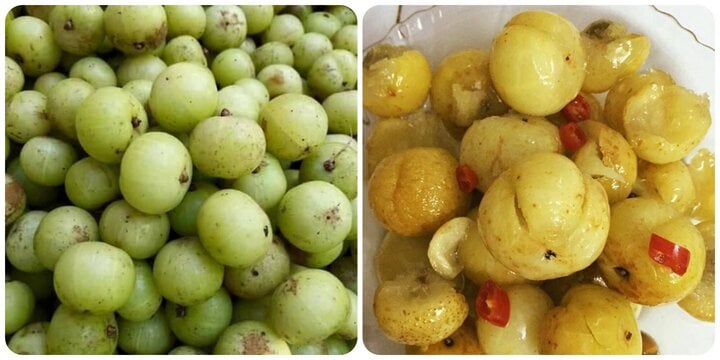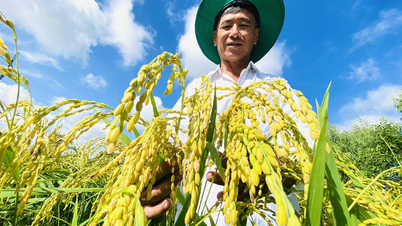This tiny fruit is the tamarind. The scientific name of the tamarind is Phyllanthus emblica, commonly known as the forest tamarind, plum tamarind, mountain gooseberry or mac kham.
This is a small green-yellow fruit, sour and astringent, after chewing carefully you will feel the sweetness in your mouth.
Effects of wild tamarind
Nutritional composition of tamarind fruit
The article on the Medlatec General Hospital website has medical consultation from BSCKI. Duong Ngoc Van said that every 100g of wild tamarind contains:
- 44g calories
- 0.9g protein
- 0.6g fat
- 10.2g carbohydrates
- 4.3g fiber
- With vitamins A, B5, E, K and other minerals such as copper and manganese.
These are all essential nutrients for the body every day.
Parts: roots, fruits, bark and leaves of the tamarind tree are harvested as medicinal herbs all year round. The fruits are only harvested in the fall and winter. Tamarind medicinal herbs can be used fresh or dried and carefully preserved for later use.

Tamarind is very good for health.
Health benefits of tamarind
According to traditional medicine
According to an article by Dr. Tran Manh Tinh in the Health & Life Newspaper, according to Oriental medicine, wild tamarind has a sour, sweet, bitter taste, cool properties, and astringent and blood pressure lowering effects.
According to Dr. Tinh, wild tamarind is often used to treat colds, fever, coughs, sore throats, and dry mouths. Use 10-30 fruits every day to make a decoction. Or soak wild tamarind in salt, then dry it to make dried apricots to treat coughs, sore throats, and vomiting.
Diabetes treatment: 15 - 20g wild tamarind fruit, marinate with salt or boil water to drink daily.
Treatment of athlete's foot: Crush tamarind fruit to get the juice and apply it to the affected area.
Cure edema: 10 - 30g of wild tamarind. You can boil corn silk and plantain together to get the water to drink many times a day.
According to the book “Medicinal Plants of Vietnam” by the late Professor Do Tat Loi, wild tamarind is used as medicine to treat a number of diseases in the form of decoction or as dried apricot. In some recent documents, there is mention of wild tamarind soaked in sugar or honey to make syrup to quench thirst and cool the body.
According to modern medicine
Modern medicine believes that tamarind is a medicinal plant that has the following uses:
+ Helps the body increase calcium absorption: Parts of the tamarind tree contain many minerals and vitamins, so they improve the body's ability to absorb calcium.
+ Improve digestion: Tamarind is rich in fiber, which helps regulate intestinal motility, limit dysentery, diarrhea and constipation. In addition, it is also a medicine to reduce bloating, flatulence and heartburn.
+ Good for the heart: Wild tamarind contains ingredients that help limit the accumulation of cholesterol inside the blood vessel walls, thereby reducing the risk of high blood pressure, atherosclerosis and stroke.
+ Support treatment of diabetes: In the tamarind tree, there is a chromium compound that participates in the process of carbohydrate and lipid metabolism, increases the connection between insulin and receptors, thereby regulating insulin levels in the blood and supporting blood sugar stabilization.
Above are the health benefits of tamarind. Hope this information will be useful to you.
Source: https://vtcnews.vn/loai-qua-be-xiu-nhung-tot-cho-phoi-giam-ho-cuc-tot-neu-an-vao-mua-dong-ar842616.html




























![[Photo] National Assembly Chairman Tran Thanh Man visits Vietnamese Heroic Mother Ta Thi Tran](https://vphoto.vietnam.vn/thumb/1200x675/vietnam/resource/IMAGE/2025/7/20/765c0bd057dd44ad83ab89fe0255b783)






































































Comment (0)